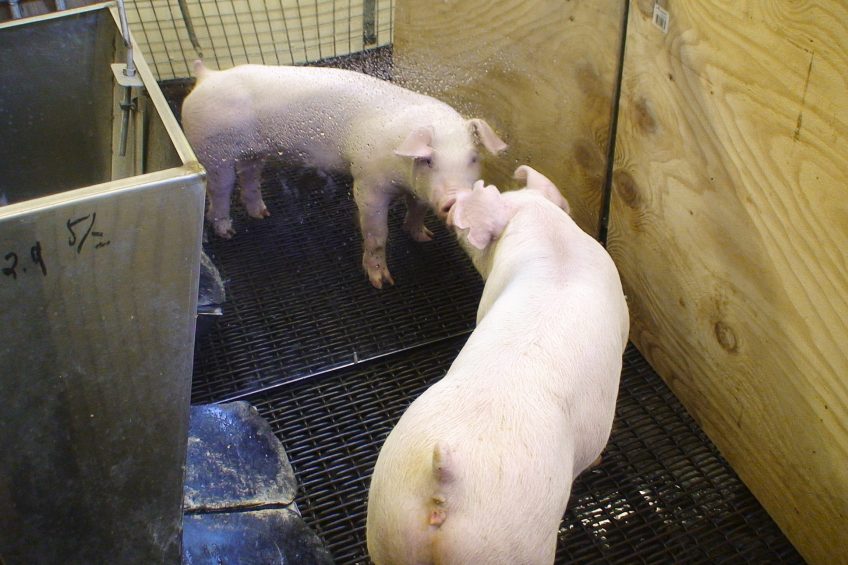Pigs like the presence of their mirror image

Pigs recognise their reflection in the mirror as a companion, American research has shown. Although applying mirrors in commercial production appears difficult, the knowledge gathered may help increase the knowledge about swine.
Animal scientist Dr Jeremy Marchant-Forde is a researcher at the Agricultural Research Service (ARS). Together with former Purdue University graduate student Shelly DeBoer and other colleagues at the ARS’ Livestock Behaviour Research Unit in West Lafayette, IN, United States, he looked at different types of pig pens.
In an article in the ARS’ Ag Research magazine, the set-up of the trial is explained.
Pens with mirrors – how did pigs react?
The researchers examined the types of pens in which the animals spent most of their time. Pigs had access to a standard rectangular pen with a metal floor with solid slides (the ‘control’ pen), one with a rubber mat on the floor, another with a mirror and a 4th with a view of another pig across a passageway through a barred gate.
Dr Marchant-Forde said in the magazine. “Pigs preferred to spend about 40% of their time in the pen where they could see the other pig. They spent about 10% of their time in the control pen and 20 and 30%, respectively, in pens with the mirror and the mat.”
Pig in pens with persons
In a 2nd experiment, scientists examined which pens pigs preferred when a person was present. To figure out the effects, each pen was categorised as ‘social’ or ‘non-social’. The pens with the mirror and view of the other pig were in the social category, and the control and rubber-mat enclosures were in the non-social category. The scientists examined which of these pens the pigs preferred when a person was present or absent.
Dr Marchant-Forde commented, “When undisturbed, pigs only slightly preferred the social over the non-social pens, and the pen across from the other pig was clearly used more than the pen with the mirror. When a person was present, pigs spent nearly 90% of their time in one of the social pens, and the mirror was as popular as the companion.”
Reflection may be perceived as companion pig
Dr Marchant-Forde hypothesised that the pig’s own reflection in the mirror may be perceived as a companion pig, offering support at stressful times. The mirrored pen may also be useful in improving a pig’s ability to cope with stress when housed alone, he added, but more research is needed for confirmation.
He noted that having mirrors in a commercial production, where pigs are kept in groups, would not be feasible. However, producers could consider using rubber mats to help improve the pigs’ environment, which may help reduce stress and promote health and productivity.
What a pig sees when it looks into a mirror may help Agricultural Research Service (ARS) scientists improve livestock housing.











